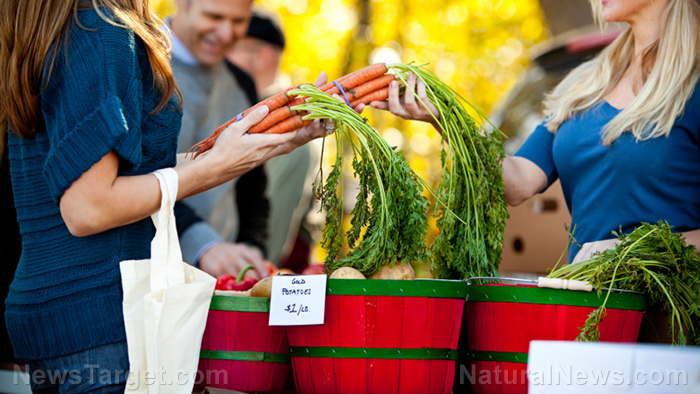
The Bolivian government invested $40 million in local food production, decreasing transportation emissions, and raising the security of small agricultural operations such as small and medium-sized farms around the country. These small-time farmers will also be receiving technology improvements and efficient irrigation systems, as well as support for their livestock breeding.
President Evo Morales is the brain behind the Law of Productive, Communal, and Agricultural Revolution. It states that $500 million annually for 10 years will be allocated to sustainable policies that guarantee self-sufficient agricultural production of high-quality food. It also aims to respect the country's biodiversity and naturalness of its crops. This revolutionary act aligns with the country's culture of living well, Suma Qamaña, and people living in harmony with Mother Earth, Pachamama. (Related: Scientists think they just invented “multifunctional polyculture” food farms, but it’s been around forever as “food forests” and “permaculture”.)
Crop seeds for planting will be distributed, some of which are tomatoes, potatoes, wheat, coffee, cocoa, and other fruits and vegetables. Fishing practices will also be improved by this investment, and will hopefully create the means to source 100 percent of needed food supplies from their own land. Marisol Solano, the deputy minister of Rural Development and Agriculture in Bolivia reports that over 20 food security projects are already underway. So far, the Public Institute for Food Sovereignty (IPDSA) reported that there was already a 25 percent increase in local food production in 2014.
By investing in its own country's production, carbon emissions from food importation will be decreased. Food importation is a major factor in the decline in a country's food production. There has been an increase in the market prices of food across the world, because there is a rise in oil prices and the existence of monopolies on overall consumable goods. Bolivia is not immune to this global volatility. Since indigenous food like quinoa are at record highs, local communities have opted to consume rice and pasta as a substitute. Given the facts above, the imbalance between local food production and global consumerism affects this developing country greatly, hence the institution of said law.
Since consumers in the country are too reliant on imports, the Bolivian government aims to create more state-owned companies that produce seeds. This will help the local farmers produce natural crops that adhere to the country's original produce, and promote self-dependence agriculturally and socially. Demetrio Perez, the president of Anapo, believes that this is a great way to turn Bolivia into an exporting country.
Ciro Kopp, an agricultural engineer at the National Council for Food and Nutrition, contradicts Perez's view on turning the country into an exporter. Before aiming to become a global producer, the country's priority should be to be able to supply its own needs first. Following the law of supply and demand, increased production in a country to supply its own needs will therefore lower its own local market prices, and thus make nutritional requirements much more affordable and accessible. This will then eliminate a country's reliance on other countries' exports.
Bolivia is on the right track in creating better circumstances to strengthen small-time producers. Since they cannot compete in the larger local, regional, and global markets, the added government support (like seed distribution and irrigation improvement) will improve their food production as well as the farmer's living conditions.
Analysts speculate that with Bolivia's notoriety for institutional turmoil, there might be a repeat of past mistakes. An example would be when their government failed to monitor their food production closely, and resulted in shortages and steep price hikes. However, given that the law is applied well and implemented strictly, Bolivia might succeed in guaranteeing self-sufficiency in food and sovereignty for its own people, while keeping respect towards its general biodiversity.
Sources include:
Please contact us for more information.























